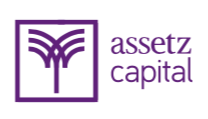The Individual Savings Account (ISA) has come a long way since Gordon Brown introduced it in 1999. It was a successor to Personal Equity Plans (PEPs)—which had been created in the 80s to promote equity ownership amongst the public—and was designed to make tax-free saving simple.
An ISA itself isn’t an investment, but instead is a wrapper which sits around your cash and ensures any returns you make are tax-free. We’ve seen ISA limits grow significantly over the years, from £7,000 to £20,000 per annum today, and it has become a key part of most personal investment strategies. It’s probably the best financial handout you’ll receive from the government.
The ISA landscape remained relatively unchanged for many years. There has always been the option of simple Cash ISAs—offered predominantly by banks and building societies—and Stocks and Shares ISAs, for the savvier investor that is familiar with the stock market. Other variations have been added too, like the more recent Lifetime ISA and Help To Buy ISA.
But in 2015, George Osborne announced the biggest shake-up to the ISA to date by introducing the Innovative Finance ISA (IFISA). This allowed investors to earn tax-free returns on peer-to-peer lending.
Although the industry has been around for over 10 years, and is regulated by the Financial Conduct Authority, peer-to-peer lending isn’t yet mainstream. It is only expected to lend around £8bn in 2018, around a tenth of the scale of cash that goes into ISAs each year. However, its potential as a different type of investment—designed to suit the modern world and provide asset class diversification for investors—is massive.
Peer-to-peer lenders help people to lend money directly to businesses or other people and look after the management of those loans. This cuts out the banks and typically offers investors a fairer rate of return on the money invested. However, like all investments, it does carry a degree of risk to your capital, in this case if a borrower is unable to repay their loan. One approach to managing that risk is to lend across a wide range of borrowers, and automate this lending where possible.
There is a range of potential interest rates available depending on your risk appetite. Assetz Capital is one of the few peer-to-peer lenders that still offers both automated investment accounts (where your investment is automatically diversified across multiple loans in order to spread the risk) and manual lending accounts where you pick each individual loan. Target gross rates of return range from 3.75 per cent to twice that or more (at the time of writing), with access times varying too. The idea is you can pick your ideal investment account to match your financial goals.
It’s fair to say that peer-to-peer lending has so far been a choice for those in the know with early adopters taking all of the returns. However, the IFISA has the potential to lift the peer-to-peer industry to the mainstream and showcase its benefits to a much wider audience.
The initial take-up of the IFISA was slower than some predicted. Only 2,000 ISA accounts were opened across the entire peer-to-peer industry in 2016/17 tax year. But the future is looking much brighter. We know from our own platform that we have already surpassed the 2,000 figure in the first month or so since our IFISA launch in December. Other major peer-to-peer players have recently now also launched their IFISA o ering, providing a much wider range of choices for this year.
HMRC reported that the amount invested in cash ISAs had fallen from £58.7bn in 2015/16 to £39.2bn in 2016/17. It appears consumers are starting to vote with their feet when it comes to nding competitive rates of return, and I believe IFISAs are set to benefit. You can transfer in cash from previous years’ ISAs of any type into an IFISA, and we’ve already seen large transfers of this sort onto our platform and those of other lenders. I expect this to continue as the public learns more about the IFISA and its bene ts.
This is a watershed year for the IFISA. It’s up to the whole peer-to-peer industry to deliver on this opportunity and help create a large-scale alternative way for everyone to invest in ISAs, just as the government originally intended when it created them.
Read more from Prospect's finance report













